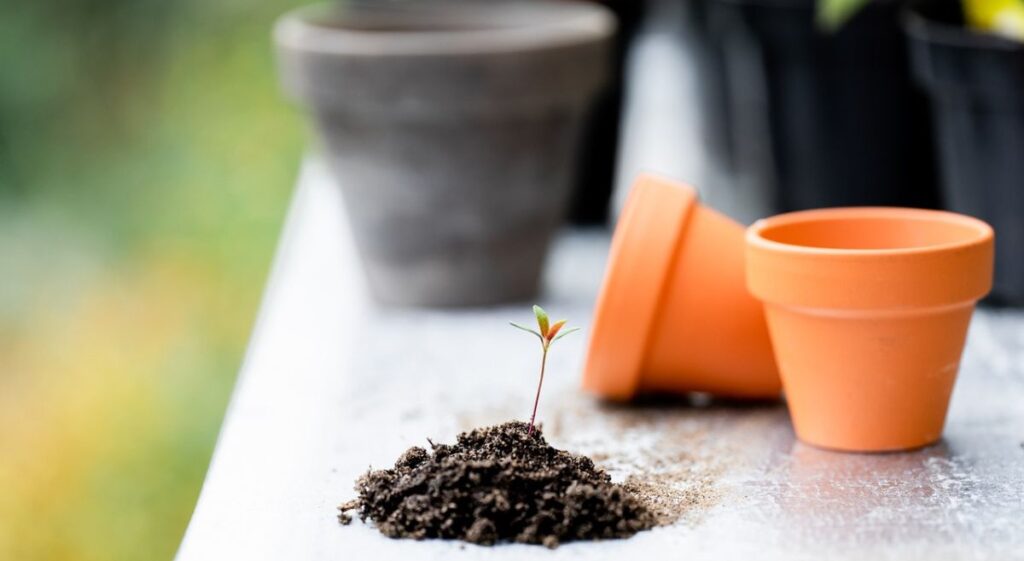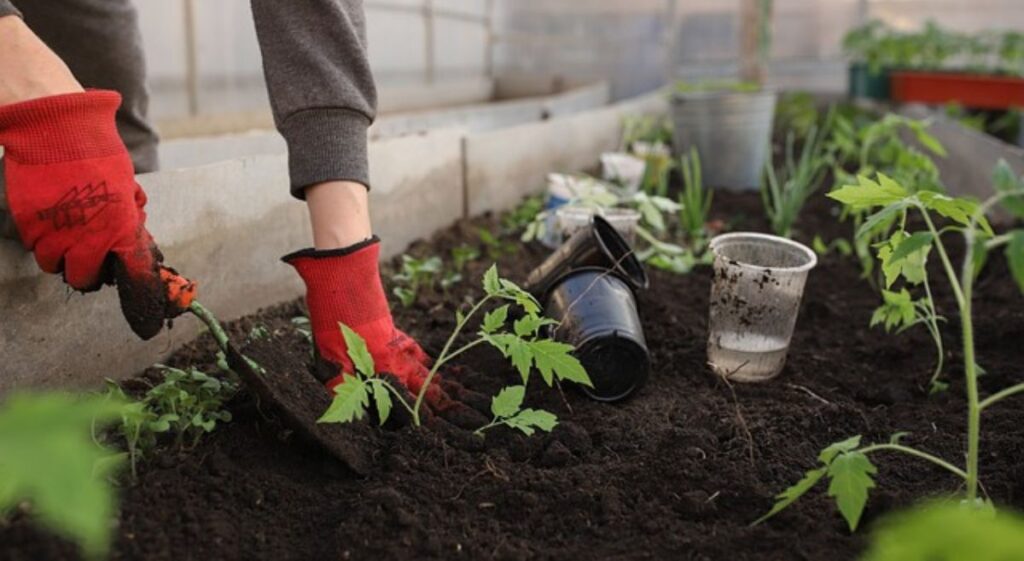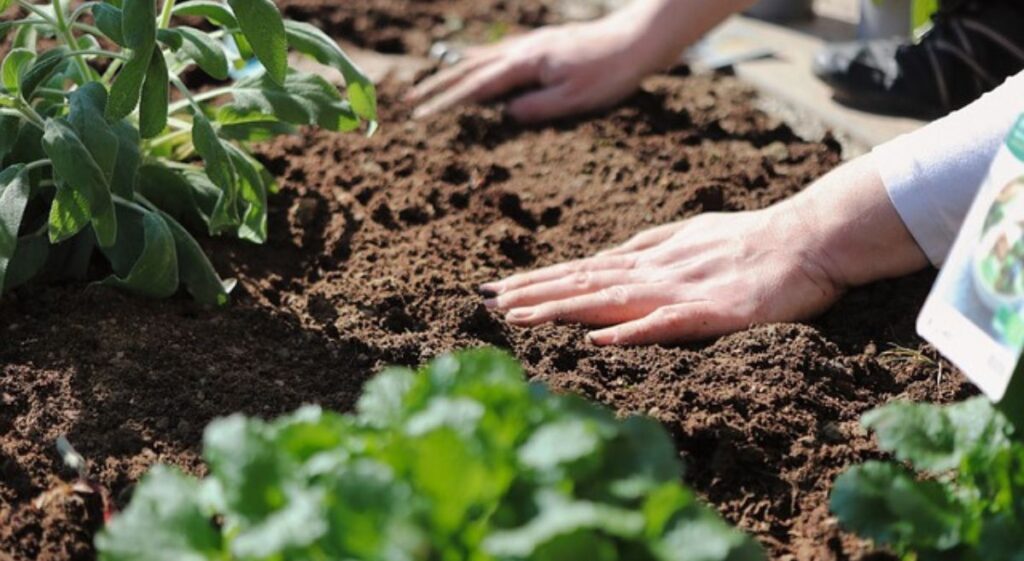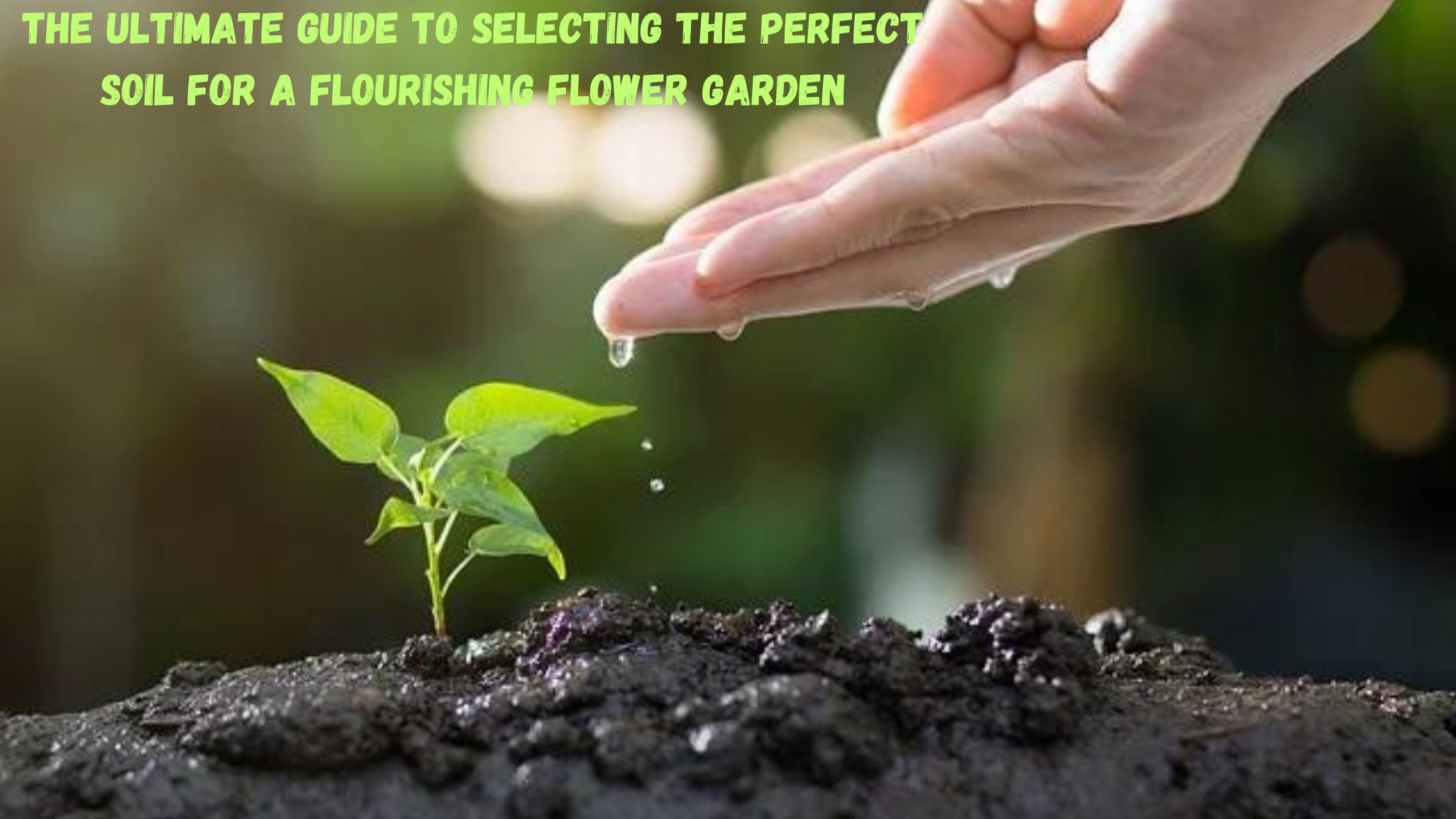Introduction:-
The Ultimate Guide to Selecting the Perfect Soil for a Flourishing Flower Garden

Unlock the secrets to a flourishing flower garden with the right soil foundation. Understanding how to select the ideal soil for your blooms is paramount in achieving a vibrant and thriving garden. In this comprehensive guide, we’ll delve into the essential factors you need to consider when choosing the best soil for your flower garden, ensuring that your flowers reach their full potential and grace your garden with their radiant beauty.
Understanding perfect Soil Composition
- Soil Components and Their Impact on Flower Gardens:
- Soil consists of organic matter, minerals, air, and water.
- The ideal soil for a flower garden should have a balanced mix of these components to ensure adequate drainage, aeration, and nutrient availability.
- Soil Types and Their Characteristics:
- Sand: Large particles, good drainage, but can dry out quickly.
- Silt: Smaller particles, retains moisture, but can compact.
- Clay: Smallest particles, holds water well, but can lead to poor drainage.
- Loam: Combination of sand, silt, and clay, offers the best balance for flower gardens.
- Soil pH and Nutrient Availability:
- Soil pH measures the acidity or alkalinity of the soil.
- Most flowers prefer slightly acidic to neutral soil, with a pH range of 6.0 to 7.0.
- Test soil pH using a soil test kit and adjust it accordingly with lime or sulfur.
- Importance of Organic Matter in Soil Health:
- Organic matter improves soil structure, increases nutrient content, and enhances water retention.
- Incorporate organic matter like compost, leaf mold, or well-rotted manure into the garden soil regularly.
- Ensuring Proper Drainage:
- Good drainage prevents water from pooling around plant roots, which can lead to root rot.
- Test drainage by digging a hole and filling it with water. If it drains within a few hours, the drainage is good. If not, amend with sand or organic matter.
- Choosing the Right Soil for Different Flowers:
- Roses: Prefer loamy soil with a pH of 6.5 to 7.0, good drainage, and high organic content.
- Tulips: Thrive in sandy, well-drained soil with a neutral to slightly alkaline pH.
- Dahlias: Need well-drained, loamy soil with a slightly acidic to neutral pH.
- Lavender: Prefers sandy or gravelly soil with excellent drainage and a slightly alkaline pH.
- Marigolds: Grow well in loamy soil with a neutral pH and good drainage.
- Common Soil Problems and Solutions:
- Compacted Soil: Add organic matter and loosen the soil with a fork or aerator.
- Nutrient Deficiency: Perform a soil test and amend the soil with necessary fertilizers or compost.
- Poor Drainage: Mix in sand or organic matter to improve soil structure.
- The Role of Mulch in Soil Health:
- Mulching with organic materials like wood chips, straw, or leaves improves soil health and maintains moisture levels.
- Apply a 2-3 inch layer of mulch around flowers, keeping it a few inches away from stems to prevent rot..
How often should I amend my garden soil?
Maintaining healthy garden soil is critical for plant growth and vitality. The frequency of soil amendment depends on several factors, including soil type, plant species, and overall garden health. Here’s a revised guideline:

- Annual Amendments: For most gardeners, amending the soil once a year is sufficient. Fall or early spring, before planting, is the ideal time for this. Adding compost, well-rotted manure, or other organic matter annually helps replenish nutrients and enhance soil structure.
- Seasonal Amendments: If you’re growing heavy feeders like vegetables or certain flowering plants, you may need to amend the soil more frequently. Apply a light layer of compost or organic fertilizer at the start of each growing season for optimal results.
- Soil Testing: Every few years, perform a soil test to determine your soil’s specific needs. If the test reveals nutrient deficiencies or pH imbalances, more frequent amendments may be necessary to address these issues.
- Post-Harvest Amendments: If your garden produces multiple harvests annually, consider amending the soil after each harvest. This is particularly important after nutrient-demanding crops have been grown.
In summary, amending your garden soil annually is a general rule, but adjustments may be necessary based on specific garden conditions and plant requirements. Regular soil testing and monitoring plant health can guide you in making informed decisions for your garden’s success.
What is the best soil mix for roses?
Roses require suitable soil conditions to flourish, known for their beauty. The optimal soil combination for roses ensures excellent drainage, richness in nutrients, and a slightly acidic to neutral pH. Here’s a step-by-step guide to creating the ideal soil mixture for your roses:
1. Loamy Soil Foundation:
- Significance: Loam, a perfect base for roses, balances sand, silt, and clay, providing both drainage and moisture retention.
- Composition: Loamy soil typically consists of about 40% sand, 40% silt, and 20% clay.
2. Organic Matter:
- Compost: Incorporate well-rotted compost to enrich the soil with essential nutrients. Compost enhances soil structure and moisture retention while promoting root development.
- Manure: Add aged manure, such as cow or horse manure, for an extra nutrient boost. Manure is particularly high in nitrogen, which is crucial for robust and healthy growth.
3. Drainage Enhancers:
- Perlite or Sand: Provide well-drained soil to prevent root rot. Adding perlite or coarse sand to the soil mix improves aeration and drainage.
- Proportion: Use approximately 10-20% perlite or sand in the mix to facilitate effective excess water drainage.
4. pH Adjustments:
- Preferred pH: Roses thrive in a pH range of 6.0 to 6.5, allowing efficient nutrient absorption.
- Adjustments: If your soil is too acidic (below 6.0), add lime to raise the pH. If it’s too alkaline (above 7.0), apply sulfur or organic matter like pine needles to lower the pH.
5. Soil Mix Recipe for Roses:
- Ingredients:
- 40% loamy soil
- 30% compost or aged manure
- 10-20% perlite or coarse sand
- 10-20% organic matter (e.g., leaf mold or peat moss)
- Mixing: Combine these ingredients thoroughly to create a uniform soil mix. Ensure it’s light, airy, and well-draining.
6. Mulching for Moisture Retention:
- Importance of Mulch: Apply a layer of organic mulch like wood chips or shredded bark around your roses. Mulch helps retain moisture, suppresses weeds, and gradually adds organic matter to the soil as it decomposes.
7. Regular Soil Testing:
- Benefits of Testing: Regular soil testing allows you to monitor pH and nutrient levels, enabling necessary adjustments over time.
- Testing Frequency: Test your soil at least once a year, ideally in early spring before the growing season begins.
In conclusion, the optimal soil mix for roses is a combination of loamy soil, organic matter, drainage enhancers, and a slightly acidic pH. By carefully selecting and preparing your soil, you provide an ideal environment for your roses, resulting in abundant, healthy blooms year after year.
What organic matter is best for enriching garden soil?
To promote healthy plant growth, improve soil structure, and increase nutrient content, enriching your garden soil with organic matter is essential. The following are some of the best organic matter sources for your perusal:

- Compost: Often considered the gold standard of organic matter, compost is made from decomposed kitchen scraps, leaves, and grass clippings. It adds crucial nutrients to the soil, enhances drainage, and improves moisture retention.
- Manure: Well-aged manure from various animals (e.g., cows, horses, chickens) is rich in nutrients, especially nitrogen. It enhances soil fertility and structure. To prevent burning plants due to excessive nitrogen, ensure that the manure is aged or composted.
- Leaf Mold: Created by letting leaves decompose over time, leaf mold excels at improving soil texture, particularly in heavy clay or sandy soils. It also aids in moisture retention.
- Grass Clippings: Fresh grass clippings can serve as green mulch or be added to compost. They are rich in nitrogen and rapidly decompose, enriching the soil.
- Peat Moss: Peat moss is used to enhance soil water retention and aeration. While it’s particularly effective in sandy soils, use it sparingly due to environmental concerns related to its harvesting.
- Straw or Hay: These materials, whether used as mulch or tilled into the soil, break down gradually, adding organic matter over time while assisting in weed suppression.
- Green Manure: Green manure involves cover crops like clover or alfalfa grown explicitly to be tilled back into the soil. They contribute organic matter and nutrients while improving soil structure.
- Worm Castings: Also known as vermicompost, worm castings are rich in nutrients and improve soil structure, aeration, and water retention. Their concentrated nature makes them ideal for container gardens.
- Wood Chips or Bark Mulch: These serve as mulch, protecting the soil surface and slowly decomposing to add organic matter over time. They are ideal for perennial gardens, around trees, and shrubs.
- Coffee Grounds: Slightly acidic, used coffee grounds can be sprinkled around plants or added to compost. They improve soil texture and provide a modest nitrogen boost.
By incorporating these organic materials into your garden soil, you can enhance its fertility and structure, resulting in healthier plants and more abundant blooms.
Conclusion
To cultivate a flourishing flower garden, the selection of suitable soil is of paramount importance. Understanding the composition of the soil, pH levels, and the specific needs of different flowers is crucial for creating a garden that not only pleases the eye but also promotes the health and sustainability of your plants. Regular testing and amendment of the soil are essential, particularly with regard to organic matter and proper drainage. By providing your flowers with the ideal soil conditions, you will be rewarded with vibrant, long-lasting blooms that will bring joy and beauty to your garden..
References
- Gardening Know How: “Understanding Soil pH for Your Garden” explores the importance of soil pH and its impact on plant growth. (https://www.gardeningknowhow.com)
- The Spruce: “How to Choose the Right Soil for Your Garden” provides guidance on selecting the appropriate soil type for different plants and gardening needs. (https://www.thespruce.com)
- University of Illinois Extension: “Soil Basics: Soil Texture and Structure” examines the physical properties of soil, including texture and structure, and their influence on plant growth. (https://extension.illinois.edu)
- Royal Horticultural Society: “Improving Soil” offers techniques and strategies for enhancing soil quality, including adding organic matter and managing soil microorganisms. (https://www.rhs.org.uk)
- Better Homes & Gardens: “The Best Soil for Growing Flowers” focuses on soil requirements for growing beautiful and vibrant flowers, discussing the ideal soil composition and ways to create a favorable environment for flower growth. (https://www.bhg.com)
